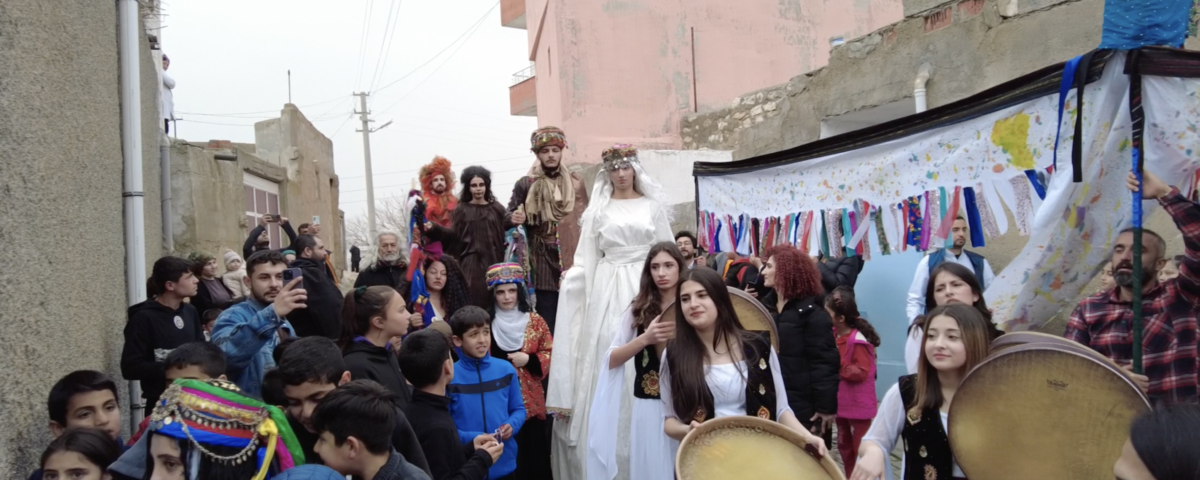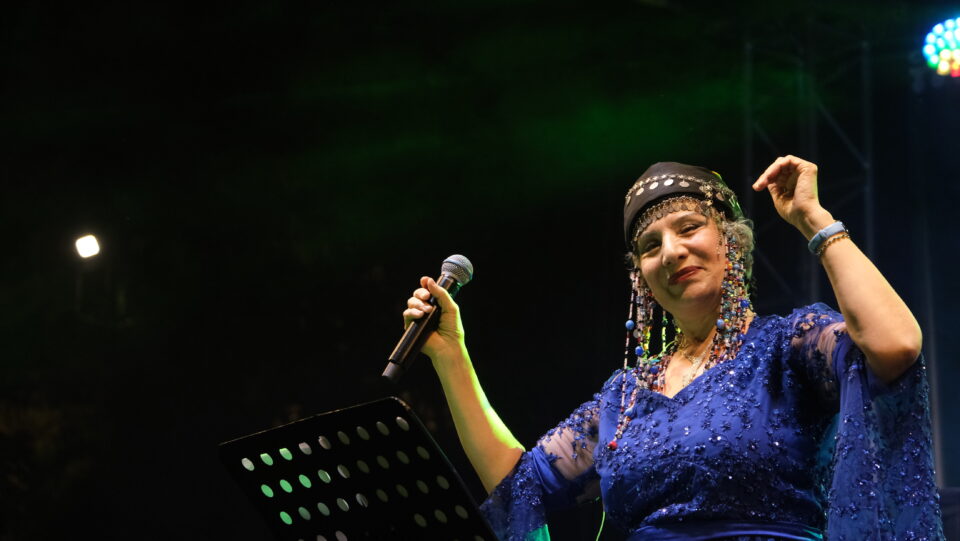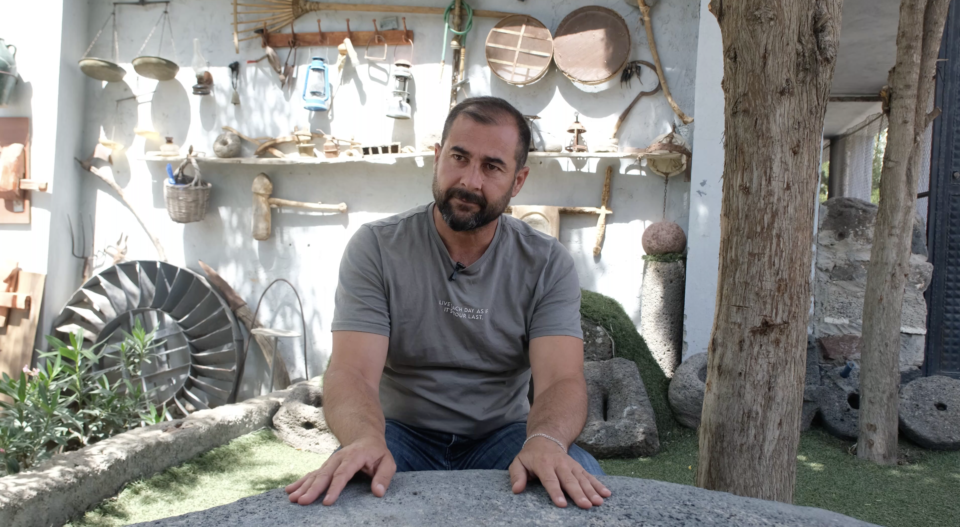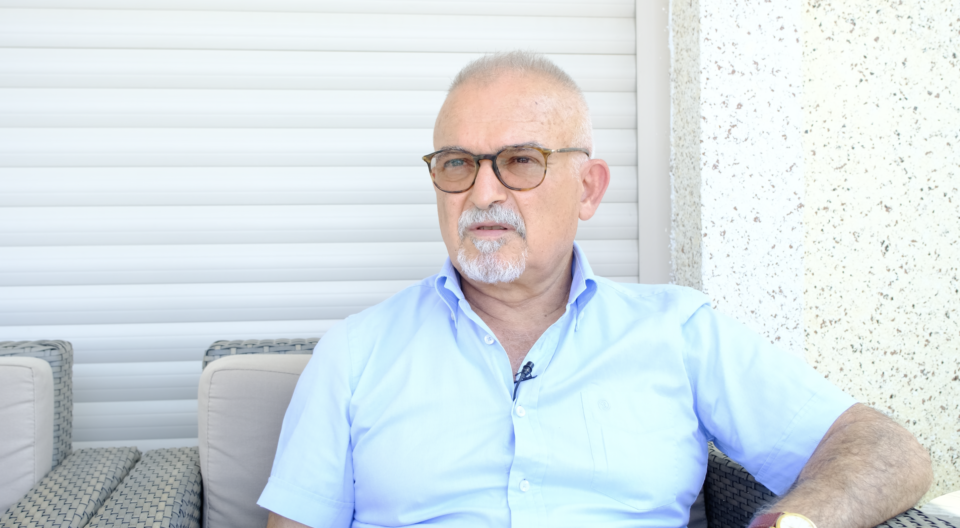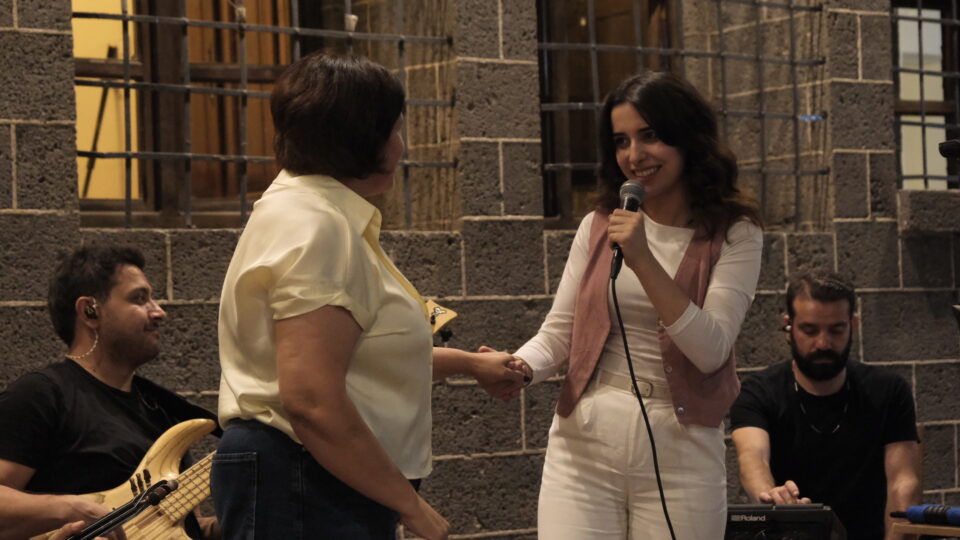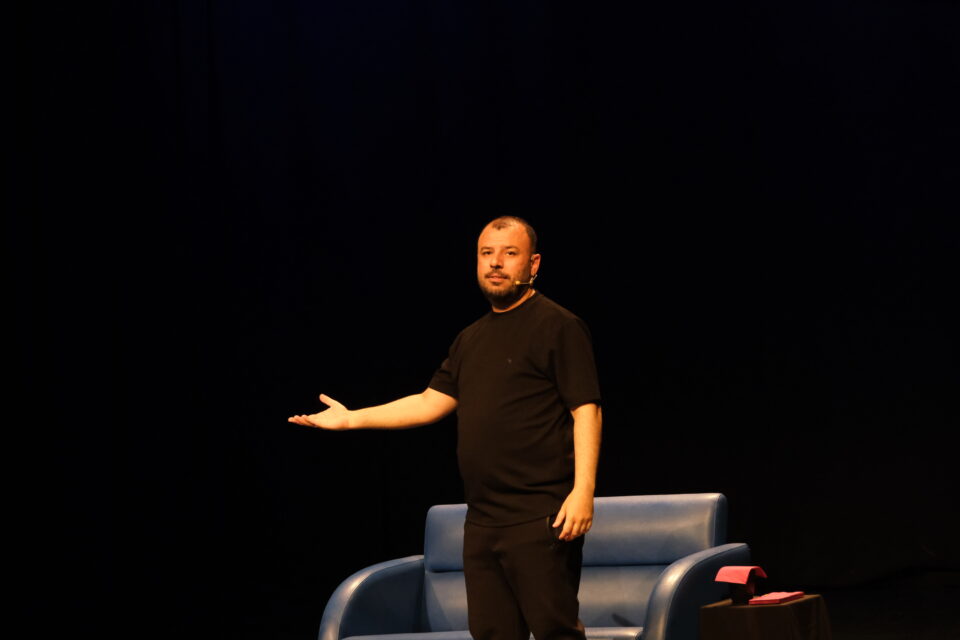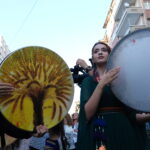
Def (erbane) in Kurdish culture: The memory of rhythm
25.06.2025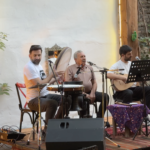
The Kevi Project: A new voice carrying the Dengbej tradition into the future
14.07.2025“Zîp im zîpedar im,
eger bibarım xweş buhar im,
eger nebarim sermadar im.”
Çarşema Zîpa, one of the most colorful traditions of Kurdish culture intertwined with nature, is a spring festival celebrated every year for three weeks starting from the last Wednesday of February, in line with the ancient nature calendar of the region. This ritual embodies the deep relationship established with the soil, water and air, ancient beliefs and social solidarity.
A bond between nature and ritual: The Zip tradition
“Zîp” symbolizes the revival of nature with the arrival of spring. Sticks are taken in hands, bells are attached and a festive atmosphere is created by going from village to village. Scenes such as hopes tied to trees and food collected from homes being cooked and shared together offer the strongest examples of establishing a collective bond with nature.
The Yazidi faith and the importance of Wednesday
Wednesday, which is sacred in the Yazidi faith, also has an important place in the cultural memory of the Kurdish people. It is no coincidence that Çarşema Zîpa is celebrated on Wednesday; just as Friday is the meaning of Friday for Muslims, Saturday for Jews and Sunday for Christians, Wednesday is also sacred for Kurds.
The fact that this holiday is celebrated on the last three Wednesdays before Newroz directly points to a universal belief, the awakening of nature. The “cemre” falling during these three weeks – water, soil and air – herald the revival of nature.
Çarşema Zîpa: A bridge between tradition and the future
Çarşema Zîpa festival, first celebrated in Diyarbakır (Mordem Sanat), Mardin (Şaneşin Performance) and Batman (Nîsk Huner) in 2024, aims to keep local culture alive and create a common memory. This celebration was a continuation of a multi-stakeholder cultural gathering initiated under the roof of LabHub, established within the scope of VAHA’s “Common Ground Through Culture in Times of Crisis” program.
Barış Işık, one of the Mordem Art Coordinators, made an important emphasis on keeping this tradition alive with the following words:
“We want to bring the Çarşema Zîpa tradition back to the people because this culture reminds us of our relationship with nature and social solidarity. If nature is at the core of life, one of the ways to understand and protect it is to keep such rituals alive.”
From the streets to the village squares: A living theater
This tradition, which was performed with 37-38 characters in Iranian Kurdistan in the past, was brought to life in the villages as a kind of living theater. Humor, criticism, nature and the public agenda were intertwined with characters such as Şaşkın Bey and Newroz Bey. This year, in Diyarbakır, a total of six characters were brought together with the public in festival processions in collaboration with Mordem Sanat and Sur Anka Association.
A festival of sharing, production and hope
Sharing seeds, distributing cooked chickpeas and frozen foods, eating products collected from homes together… Each of these carries great meaning in terms of keeping a collective production and sharing culture alive. Çarşema Zîpa is also becoming a symbol of a reestablished connection with nature in the age of climate crisis and social alienation.
A legacy carried to the future
Mordem Sanat did not only organize performances at this year’s festival; it also published a special book recording this tradition. Barış Işık says:
“We do not want to tell future generations ‘we had such a tradition once’. We want to continue this tradition by keeping it alive and enriching it. If the opportunities allow every year, our biggest dream is to turn this festival into a festival-like spring carnival that will last until Newroz.”

